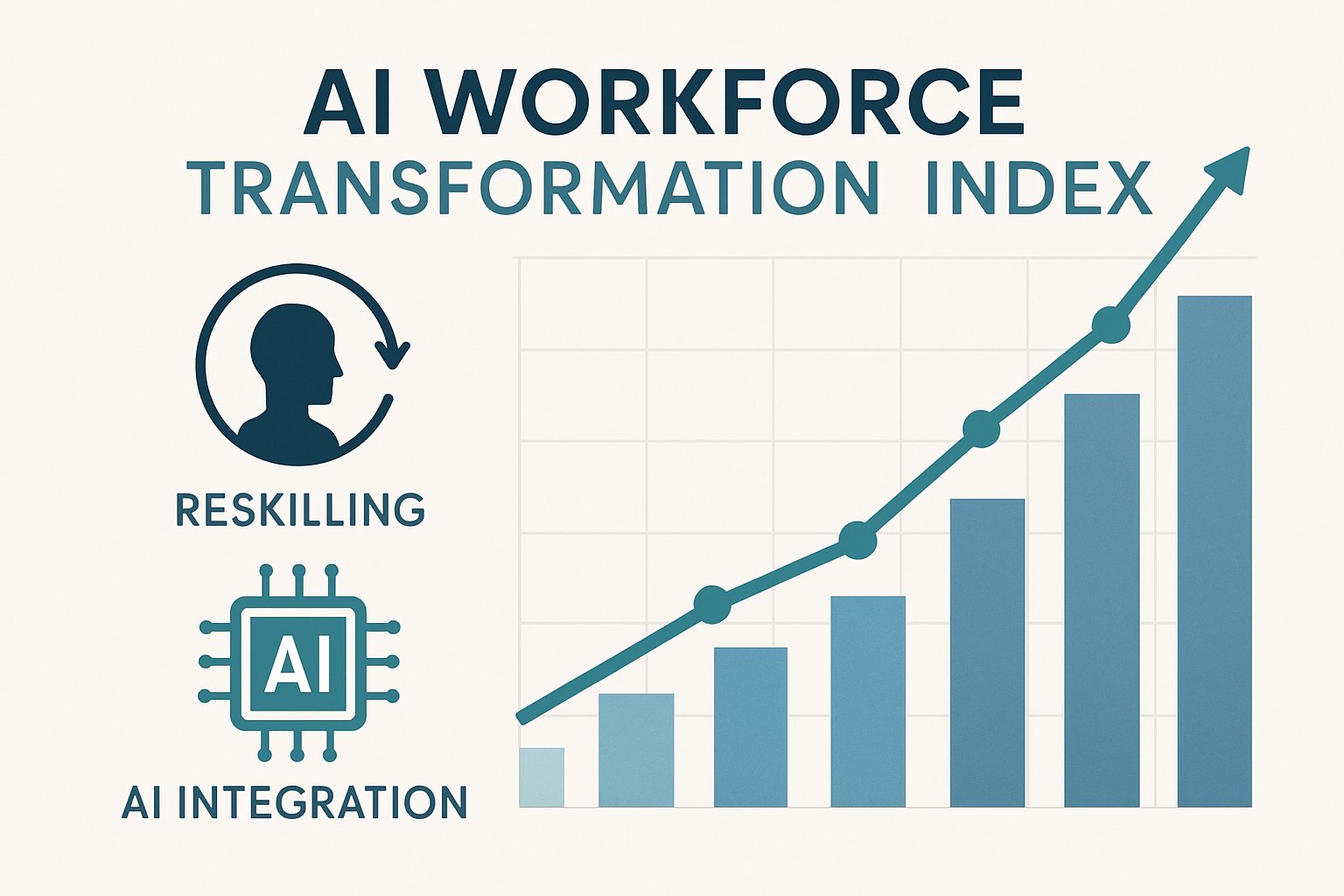
AI CERTS
18 hours ago
Kyndryl Services Boost AI Workforce Transformation Index
This article dissects the strategy, market context, and leadership implications. It also maps concrete steps for job redesign with AI and enterprise reskilling. Readers will gain benchmarks, risk signals, and certification guidance for sustained impact. Let us begin with the sentiment data shaping corporate priorities.
Urgent Executive Sentiment Shift
Survey data highlight a looming inflection point. Furthermore, the AI Workforce Transformation Index reports 87 percent foresee complete role overhaul within months. Yet only 29 percent believe their people possess adequate AI fluency.

In contrast, just 54 percent already realize positive returns from existing deployments. Consequently, momentum clashes with readiness gaps, producing strategic tension for boards. Leaders quote geopolitical cloud risks and pilot paralysis as additional blockers.
Moreover, average AI spending climbed 33 percent year over year, signalling budget commitment. Therefore, urgency and investment are outpacing workforce capabilities. These mismatches underpin Kyndryl’s new advisory push.
The AI Workforce Transformation Index exposes accelerating demand against limited skills supply. However, service partners aim to close that gap.
Inside Kyndryl Agentic Launch
Kyndryl unveiled its Agentic AI Framework alongside new Consult and Vital services. Additionally, the bundle covers workforce change, process redesign, and people-AI experience design. Early engagements include a manufacturing group and a healthcare provider.
Kyndryl positions agentic systems as proactive digital colleagues that anticipate needs and act autonomously. Subsequently, the company claims faster time-to-value than traditional co-pilot models. Senior VP Ismail Amla stated that agentic AI will reshape enterprise structure and customer engagement.
Furthermore, the suite integrates with the Bridge observability platform for governance and metrics. The launch also references the AI Workforce Transformation Index to quantify market pain. Bundling data and consulting offers Kyndryl differentiation amid fierce competition.
Kyndryl bets that design-led adoption will overcome resistance faster. Consequently, rivals are recalibrating their own playbooks.
Benchmarking Market Readiness Gaps
Gartner forecasts soaring AI consultant demand yet warns of premature hype. Indeed, analysts predict over 40 percent of agentic projects may be abandoned by 2027. Nevertheless, expenditure on AI services keeps climbing, driven by transformational ambitions.
Industry estimates from IDC and FMI echo similar double-digit compound growth horizons. Meanwhile, 62 percent of surveyed firms remain stuck in pilot phases. Therefore, scaling disciplines such as governance, integration, and upskilling become decisive.
Key statistics illustrate the challenge:
- 87% expect job transformation within 12 months
- 29% feel their workforce is AI ready
- 54% already report positive AI returns
- 62% still cannot exit pilot purgatory
These indicators reveal urgent gaps between aspiration and execution.
The AI Workforce Transformation Index anchors these benchmarks for cross-industry comparison. In contrast, organizational readiness remains uneven and fragile.
Competitive Consulting Landscape Shifts
Accenture, Deloitte, and other integrators are expanding agentic AI capabilities. Furthermore, they pair technology alliances with large-scale enterprise reskilling programs. The AI Workforce Transformation Index also reveals widening capability disparities between consulting clients. Deloitte recently launched its AI Factory with NVIDIA and Oracle.
AWS and Salesforce push agent frameworks that could commoditize underlying automation. Consequently, service differentiation gravitates toward change management depth and sector templates. Kyndryl emphasizes infrastructure heritage and human-centric design to stand out.
Moreover, certification ecosystems are growing to address leadership skill gaps. Professionals can validate mastery through the AI+ Executive™ program. Such credentials complement job redesign with AI initiatives across industries.
Competitive heat will intensify pricing and talent wars. Nevertheless, clear value propositions will decide winners.
Governance And Risk Outlook
Data sovereignty dominates executive risk conversations. Approximately 75 percent fear geopolitical turbulence around global cloud storage locations. Therefore, 65 percent already adapt cloud architectures through repatriation or private deployments.
Additionally, agentic AI amplifies audit, security, and explainability requirements. Gartner cautions about “agent washing” and inflated autonomy claims. Consequently, boards demand strict guardrails before approving rollouts.
The AI Workforce Transformation Index includes governance metrics to benchmark maturity against peers. Organizations that score higher tend to link controls with reskilling roadmaps. This alignment supports sustainable scaling and regulatory compliance.
Risk management remains inseparable from workforce planning. Subsequently, leaders must craft integrated action plans.
Strategic Actions For Leaders
Leaders should start with a candid readiness audit against the AI Workforce Transformation Index. Moreover, prioritize role mapping to support job redesign with AI before technology deployment. Align these maps with measurable productivity and risk outcomes.
Next, build iterative enterprise reskilling programs with layered certifications and micro-learning. Furthermore, pair classroom content with experiential agent sandboxes to accelerate adoption. Link achievements to recognitions like the AI+ Executive™ credential.
Simultaneously, pilot agentic workflows in narrow, high-value processes. In contrast, avoid broad enterprise rollouts until governance models stabilize. Measure pilot results publicly to reinforce trust.
Finally, embed continuous feedback loops into people-AI experience designs. Consequently, iterate interfaces, policies, and skills quarterly. The AI Workforce Transformation Index can track progress across these cycles.
Structured audits, targeted reskilling, and phased pilots create momentum. Therefore, organizations move from aspiration to repeatable value.
Global executives see AI reshaping work within months, yet readiness lags. Kyndryl’s agentic services aim to close this dangerous gap. However, Gartner’s caution reminds leaders to keep expectations grounded. The AI Workforce Transformation Index offers an objective compass for progress tracking. Consequently, smart organizations couple index benchmarks with disciplined job redesign with AI projects. They also launch enterprise reskilling programs backed by respected credentials. Furthermore, certifications such as the AI+ Executive™ enhance leadership credibility. Act now, benchmark often, and steer your workforce toward resilient, AI-augmented growth.



